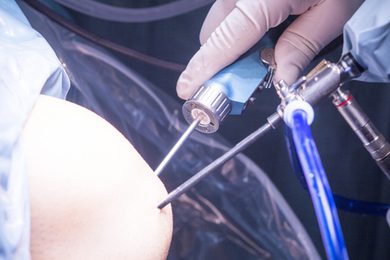Besides General Orthopaedic Services, we provide Subspecialty Services based on training, experience and clinical interest. The paradigm shift in managing orthopaedic conditions has resulted in sub-specialization to provide a more comprehensive and clinically relevant management to the specifics of the condition of concern. It is holistic yet patient and condition specific to ensure appropriate and timely treatment for a specific condition.
Minimally Invasive Surgery



Overview
The Surgical Techniques have evolved through the ages with the current practice being less invasive compared to conventional surgical techniques. Minimally Invasive Surgery has its advantage of having a smaller scar, less soft tissue injury during surgery and better functional recovery.
Clinical Implications
The indication for Minimally Invasive surgery is dependent on various factors. Besides technical skill, it also depends on the nature of intended surgery, the fracture configuration, soft tissue conditions and patient factors. The benefits of fracture fixation in a minimally invasive technique has been made possible with promising results due to the improved technology and design of implant particularly the use of anatomical implants and locking plates for complex fractures and fragility fractures. This is often known as Minimally Invasive Plate Osteosynthesis (MIPO). Intramedullary Nailing is another technique to treat shaft fractures in a minimally invasive approach. The healing if the bone is often more effective as the minimally invasive technique allows biological healing. Similar minimally invasive approach is also possible for surgeries involving the joint and with the use of navigation in joint replacement surgery.
